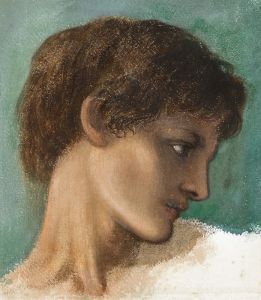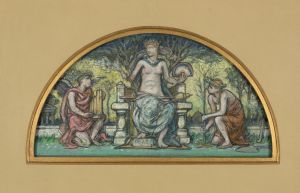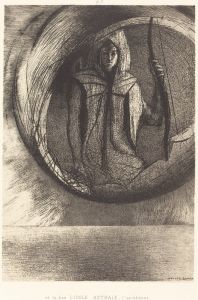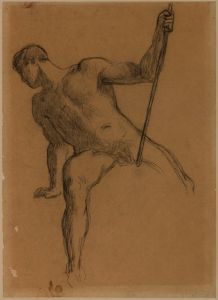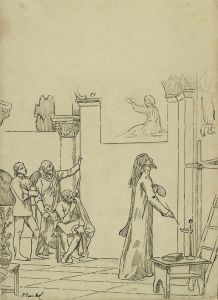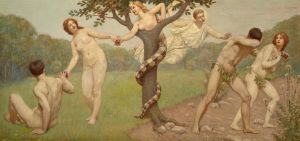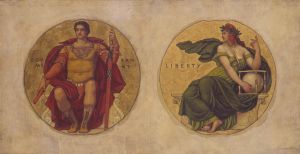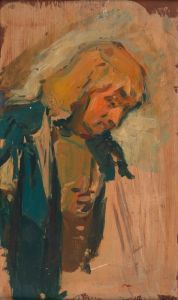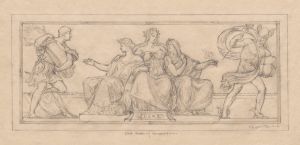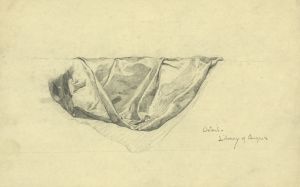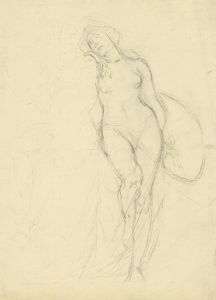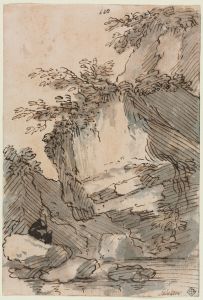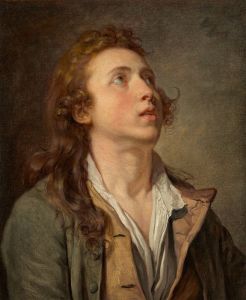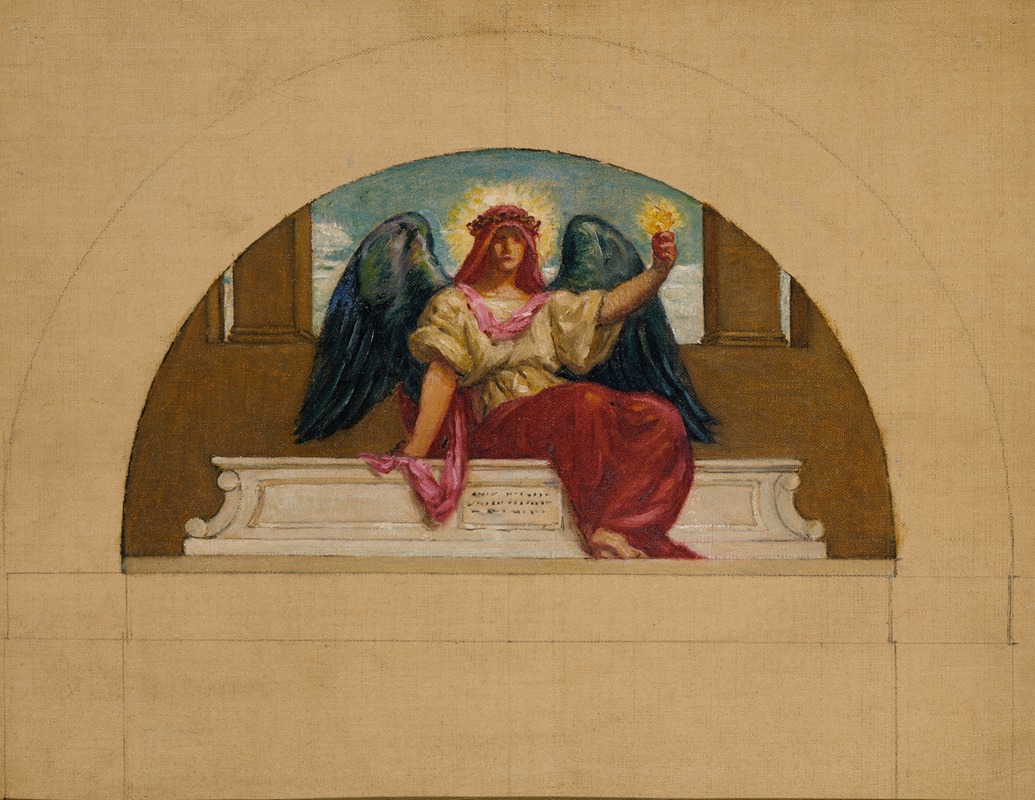
Sketch for the Mural at Oberlin College, ‘The Spirit of Self-Sacrificing Love’
A hand-painted replica of Kenyon Cox’s masterpiece Sketch for the Mural at Oberlin College, ‘The Spirit of Self-Sacrificing Love’, meticulously crafted by professional artists to capture the true essence of the original. Each piece is created with museum-quality canvas and rare mineral pigments, carefully painted by experienced artists with delicate brushstrokes and rich, layered colors to perfectly recreate the texture of the original artwork. Unlike machine-printed reproductions, this hand-painted version brings the painting to life, infused with the artist’s emotions and skill in every stroke. Whether for personal collection or home decoration, it instantly elevates the artistic atmosphere of any space.
Kenyon Cox's Sketch for the Mural at Oberlin College, ‘The Spirit of Self-Sacrificing Love’ is a preparatory work created by the American artist Kenyon Cox (1856–1919). Cox was a prominent painter, muralist, and art critic of the late 19th and early 20th centuries, known for his allegorical and academic style rooted in classical traditions. This sketch was part of his design process for a larger mural commissioned for Oberlin College in Oberlin, Ohio.
The mural, titled The Spirit of Self-Sacrificing Love, was created for the college's Finney Chapel, a space dedicated to spiritual and communal gatherings. The work reflects Cox's commitment to allegorical themes, often drawing on classical and Renaissance influences to convey moral and philosophical ideals. The theme of self-sacrificing love aligns with Oberlin College's historical emphasis on social justice, moral responsibility, and progressive values, including its early advocacy for abolitionism and coeducation.
The sketch itself demonstrates Cox's meticulous planning and attention to detail in the mural-making process. It likely served as a conceptual and compositional study, allowing him to refine the arrangement of figures, gestures, and symbolic elements before executing the final mural. While the exact medium of the sketch is not specified, Cox often worked in pencil, charcoal, or oil for his preparatory studies.
Kenyon Cox was a leading figure in the American Renaissance movement, which sought to elevate public art through large-scale murals and architectural decoration. His works often featured idealized human figures, harmonious compositions, and allegorical narratives intended to inspire and educate viewers. The mural at Oberlin College is one of many examples of his contributions to this movement, which aimed to integrate art into public and institutional spaces.
The final mural, completed in 1914, remains an important part of Oberlin College's artistic and cultural heritage. It reflects both Cox's artistic philosophy and the broader cultural values of the period, emphasizing themes of altruism, sacrifice, and the pursuit of higher ideals. The preparatory sketch serves as a valuable artifact, offering insight into Cox's creative process and the development of his vision for the mural.
Further details about the specific content and visual elements of the sketch are not widely documented, but its connection to the completed mural underscores its significance within Cox's body of work and the history of American mural painting.





